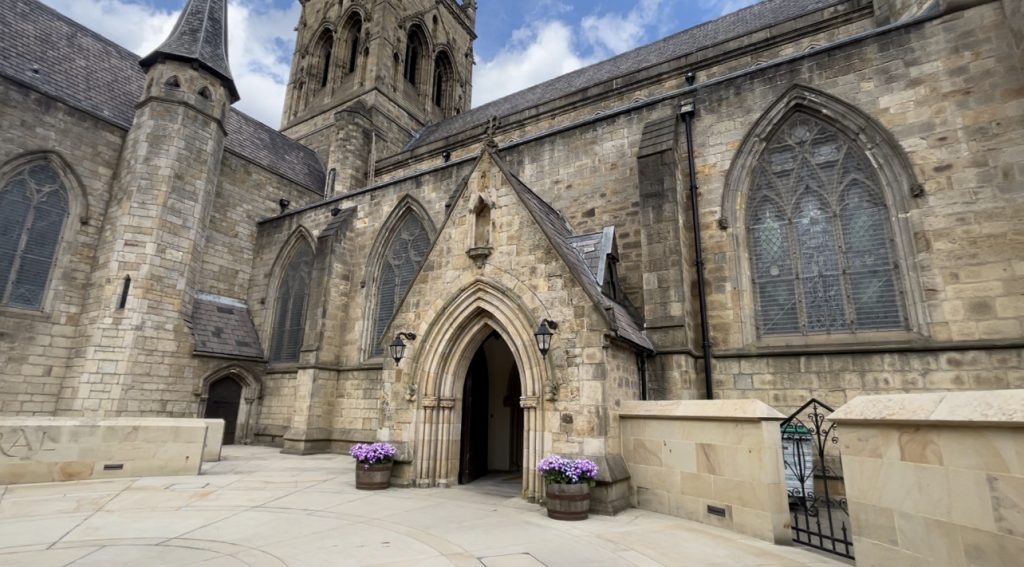
May in the UK celebrates Local and Community History month, the Historical Association encourages everyone to research their local history.
Salford’s history goes back to 923AD, being one of the world’s first industrial cities, with many historical landmarks still standing.
Salford was a key part of the industrial revolution and is home to the countries first free public library.
St John’s Cathedral
Salford Cathedral is a Catholic Cathedral dedicated to St John the Evangelists.
The first foundation stone was laid on May Whit Thursday by Bishop James Charles in 1844, however it was not officially opened until the 9th August 1848.
St John’s Cathedral was designed by Matthew Ellison Hadfield, who took inspiration from churches around England.
Hadfield designed the first cruciform Catholic church to be built in England since the Reformation.
The total cost of building the Cathedral was £18,000!
Ordsall Hall – Tudor House
Ordsall Hall is a finely preserved Tudor house, first mentioned in records dating back to 1177!
The house is a former manor house that has been home to medieval gentry, Tudor nobility, Catholics loyal to the crown and more.
The historic building is also rumoured to be haunted by several ghosts.
Ordsall Hall have interestingly set up a ghost cam to catch the ‘mysterious’ ‘White Lady’ and the ghost of a young girl often rumoured to be seen on the stairs.
Another interesting legend about Ordsall Hall is that it was the location where Guy Fawkes plotted to overthrow King James in the famous Gunpowder plot.
Saint Phillips Church:
Saint Philips Church is an Anglican parish church in Salford, the construction of the building was finished between 1822 and 1824.
The total cost of the building was £14,670, an equivelant of £1,510,000 in 2020.
In 2016 the church was relaunched as Saint Phillip’s Chapel Street.
Salford Museum and Art Gallery
Previously known as Lark Hill mansion, Salford Museum and Art Gallery was purchased by Salford City Council in 1849.
The building was turned into a public museum and library on 9th January 1850, named the Royal museum and Public library.
The library was the first free library available to the public in the country.
It attracted more than 1,240 visitors within its first 129 days of being opened.
Queen Victoria and Prince Albert were the first patrons of the museum, with royal patronage continuing until 1940.















Recent Comments